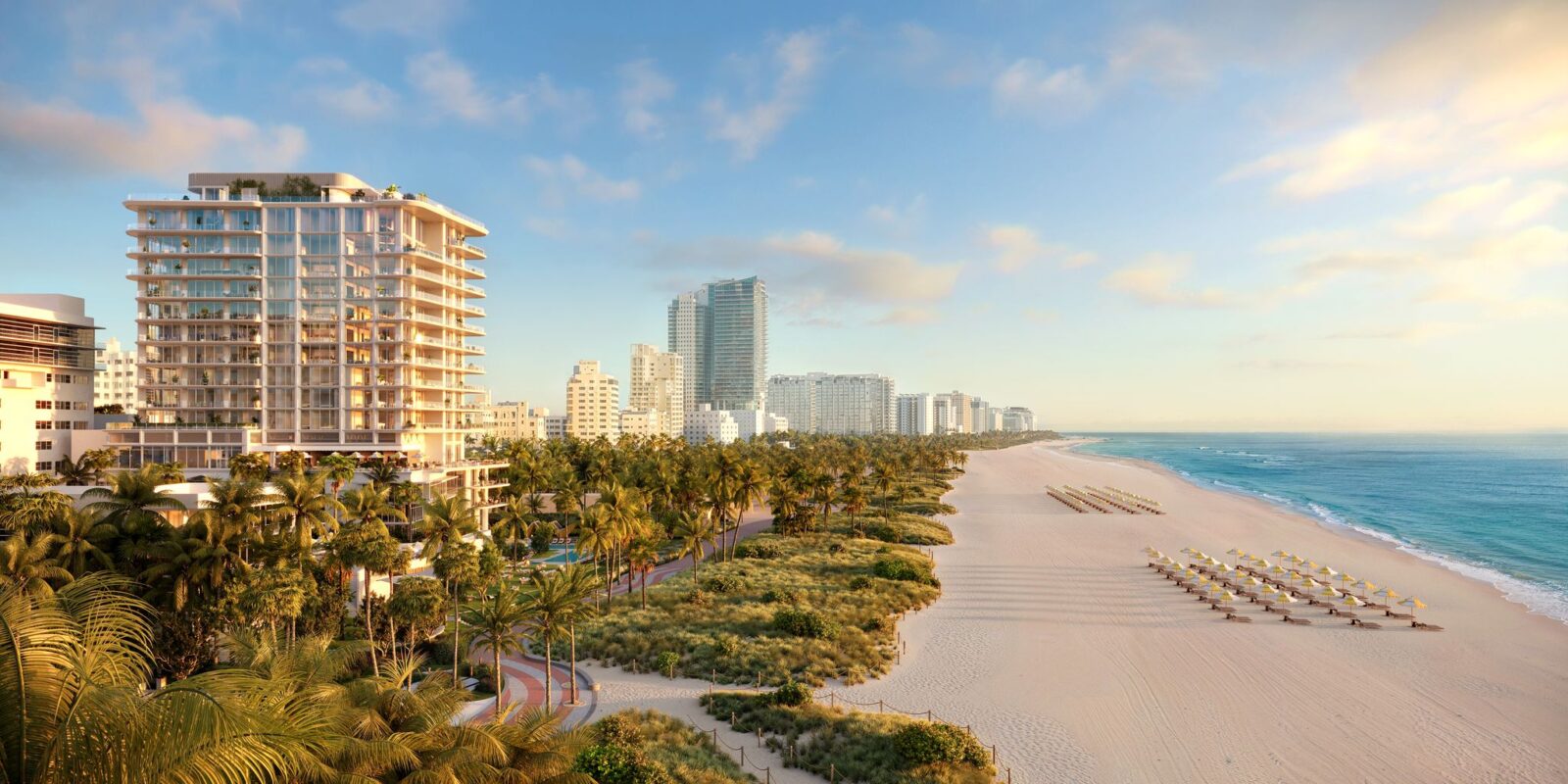This November, as the World Architecture Festival makes its U.S. debut in Miami, the global design community will see a city in the midst of an architectural renaissance. Once known for flash and spectacle, Miami is stepping onto the world stage as a serious design capital, driven by its multicultural, international community and a growing appetite for architecture and high design.

Welcome to the Ritz-Carlton Residences, South Beach: Built on the historic site of the classic Sagamore Hotel, the intimate collection of 30 residences nods to Miami’s history while updating its aesthetic with tailored, contemporary restraint. The Ritz Residences, South Beach are brought to life through Kobi Karp’s intimate, local knowledge of the city’s architectural DNA combined with Alessandro Munge’s globally-honed design perspective. In conversation with Alessandro and Kobi, we delve into their influences, a changing Miami and evolving definition of luxury to fit today’s lifestyle.
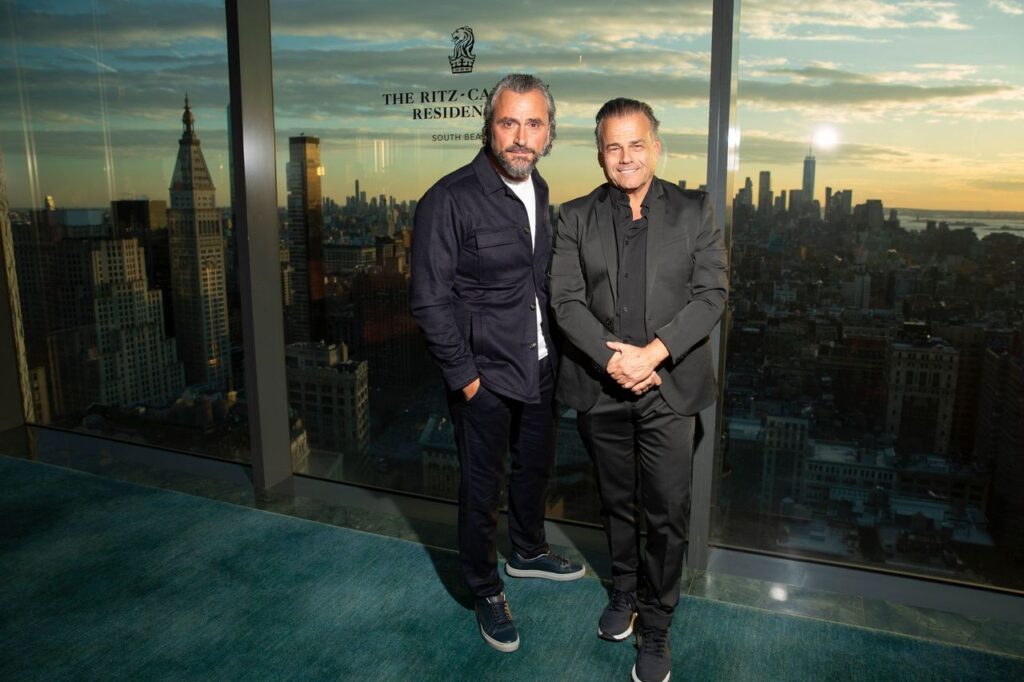
DNN: Miami has always had global attention, but the design world seems to be taking it more seriously now. Why do you think this shift is happening and why now?
Alessandro: Miami has matured into a global cultural destination fueled by a growing international community, a booming art and culinary scene, and a clientele that’s more design-literate and design-driven than ever. There’s an appetite now not just for flash, but for depth and design with intention and legacy. That shift has opened the door for more sophisticated architectural and interior narratives.
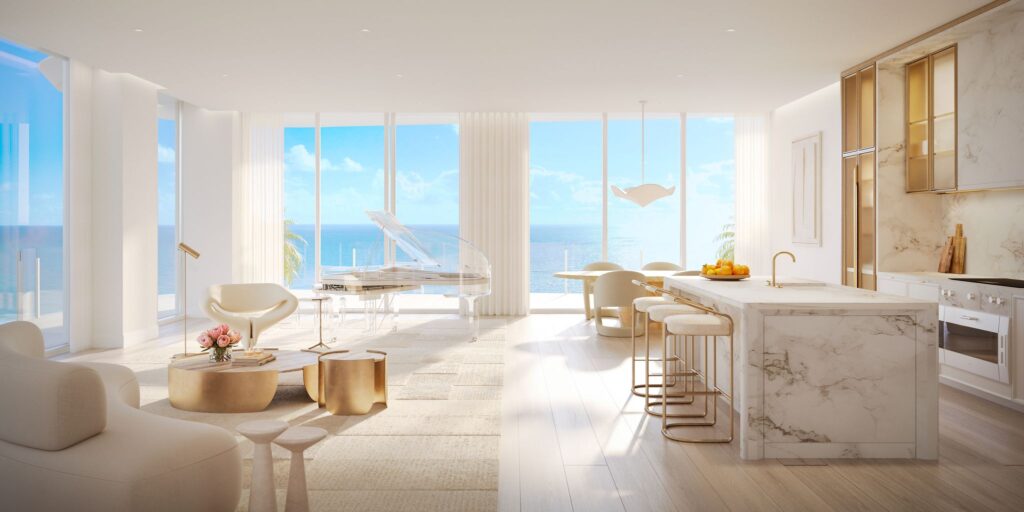
Kobi: I think the design and creativity in Miami have truly been internationalized by the diverse mix of individuals who live here. This blend of cultures has created a unique platform and foundation for design, rooted in the United States’ only tropical climate. Over the past 20 years, a kind of designer liberation has taken place in Florida, allowing modern and cutting-edge ideas to flourish. Inspired by the Art Deco and MiMo liberation, this evolution has shifted the way people think about design here, making it more widely accepted, desired, and now actively requested from us by clients all over the world.
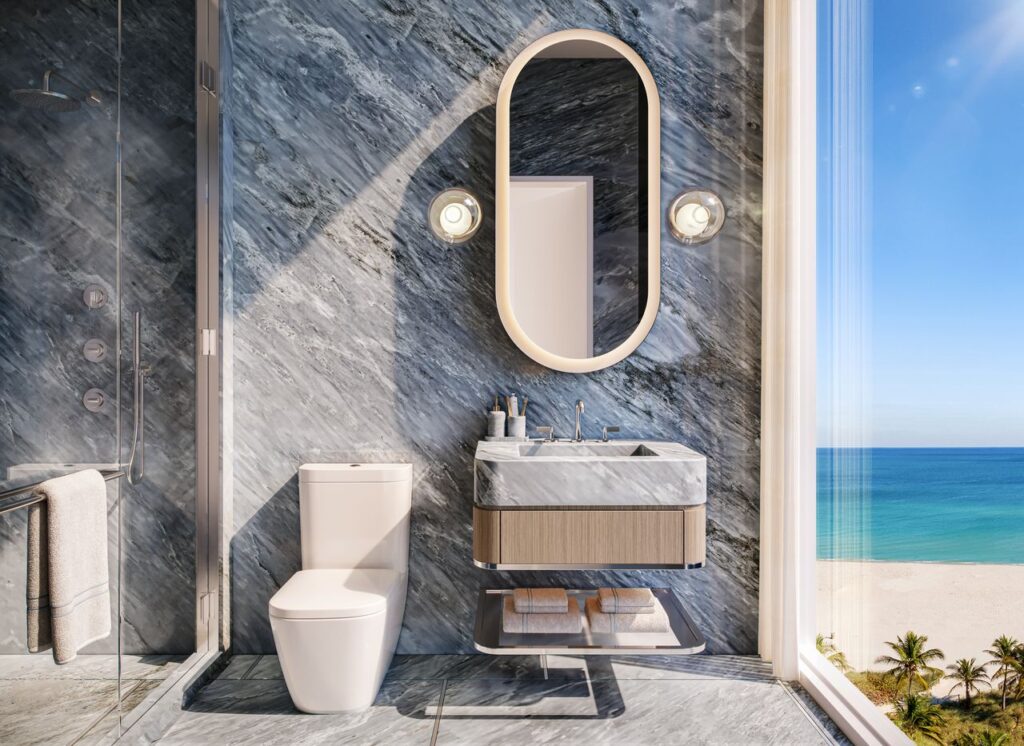
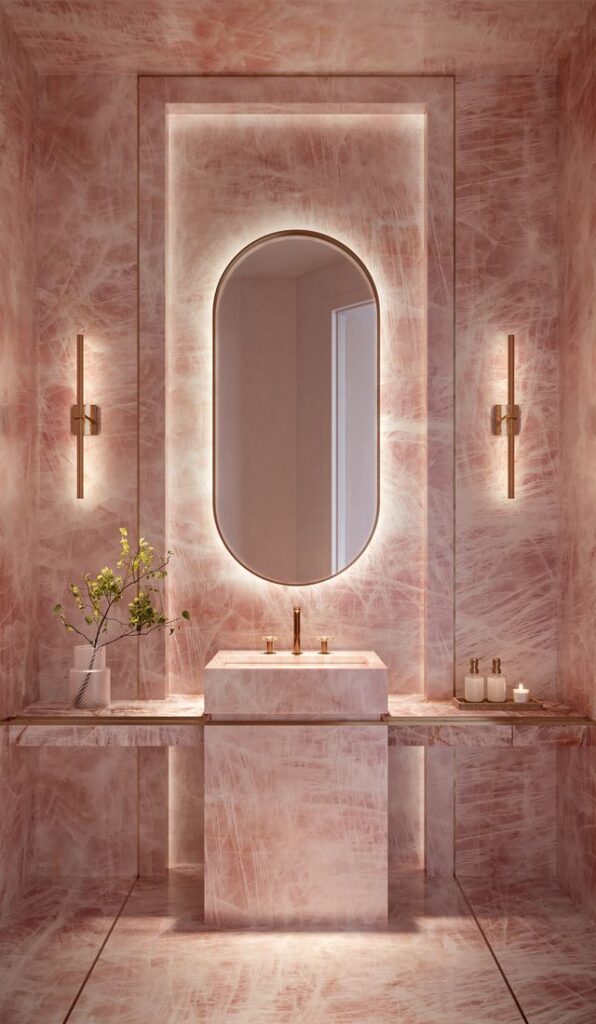
The tension between local and global
DNN: This collaboration feels like a conversation between two perspectives: local and global, intuitive and sculptural. What were the earliest creative sparks between you both? What does collaboration really mean to you at this level? And how do you stay true to your individual voices while building something cohesive?
Alessandro: The earliest spark was a mutual respect for design that’s emotionally resonant and deeply contextual. For us, collaboration means creating space for ideas to evolve, listening carefully, pushing boundaries respectfully, and trusting the process. Staying true to our voice means being authentic to our values: craftsmanship, elegance, and emotion, while allowing the architecture to guide the story. The cohesion comes from a shared belief in timeless design.
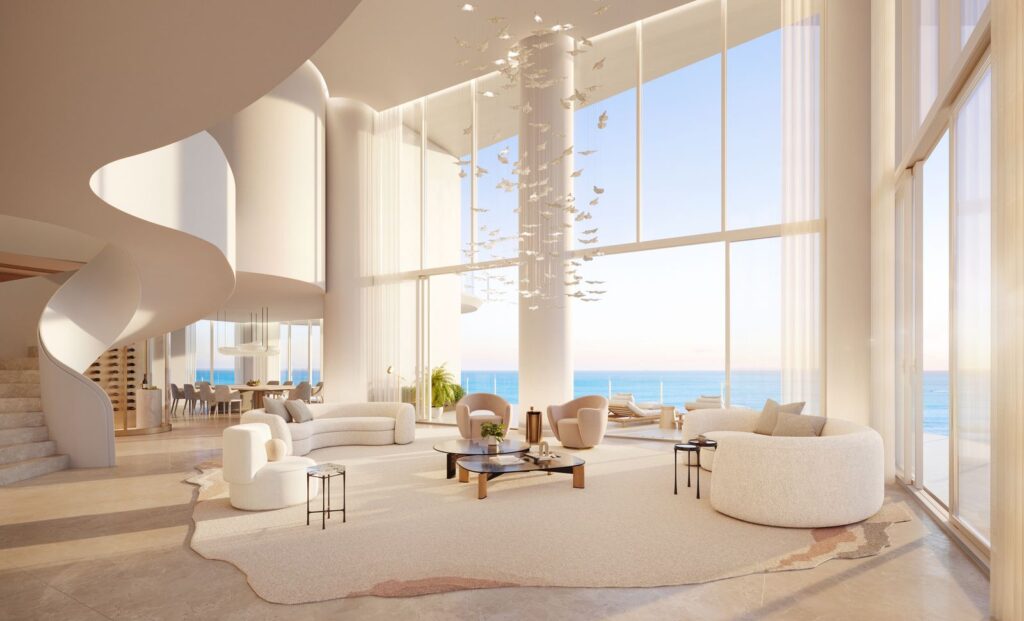
Kobi: The Ritz in Miami Beach, located on Lincoln Road and the beach walk, was a true inspiration for the power of collaboration among historic architects. The original building was designed by Morris Lapidus in partnership with other notable figures, such as Igor Polevitzky. For example, Lapidus worked on the DiLido Hotel alongside Albert Anis, who designed the adjacent Sagamore Hotel. Together, these buildings formed an architectural tapestry within the historic district—an urban fabric tied to the pedestrian energy of Lincoln Road, which Lapidus himself designed.
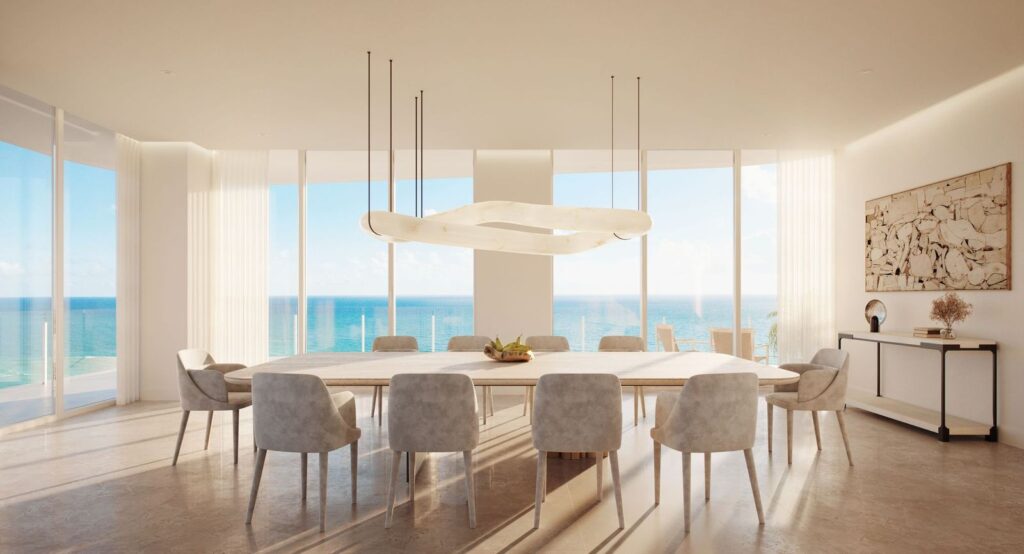
We drew from that legacy of collaborative, historic design along the Beachwalk and Collins Avenue, and sought to carry it forward. Our vision was to connect the pedestrian experience and lush landscaping of Lincoln Road all the way to the ocean, creating a seamless link to the beach. This approach gave us the opportunity to design sculptural, modern residences that honor the area’s history while bringing a new architectural voice to the boardwalk. That, to me, is what collaboration means, respecting individual perspectives while building something cohesive and timeless.
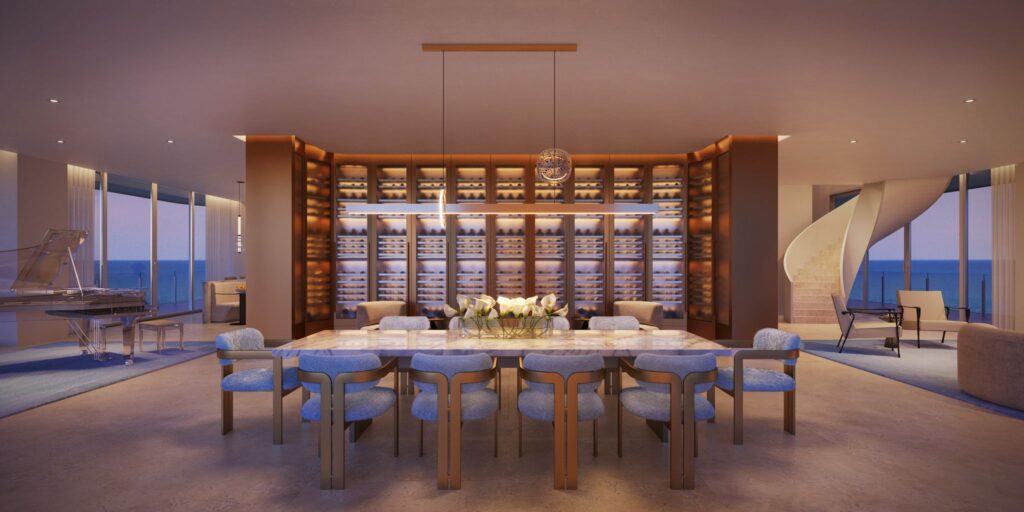
Branded residences
DNN: The Ritz-Carlton Residences, South Beach, don’t follow the usual playbook for branded residences. What boundaries were you pushing, and where did you decide to edit rather than add?
Alessandro: From the outset, we didn’t want to simply replicate luxury; we wanted to redefine it. That meant prioritizing intimacy over scale, nuance over opulence. We pushed against the expected by stripping away what wasn’t essential and allowing space to speak. Editing became a powerful tool: every material, proportion, and gesture had to justify its place.
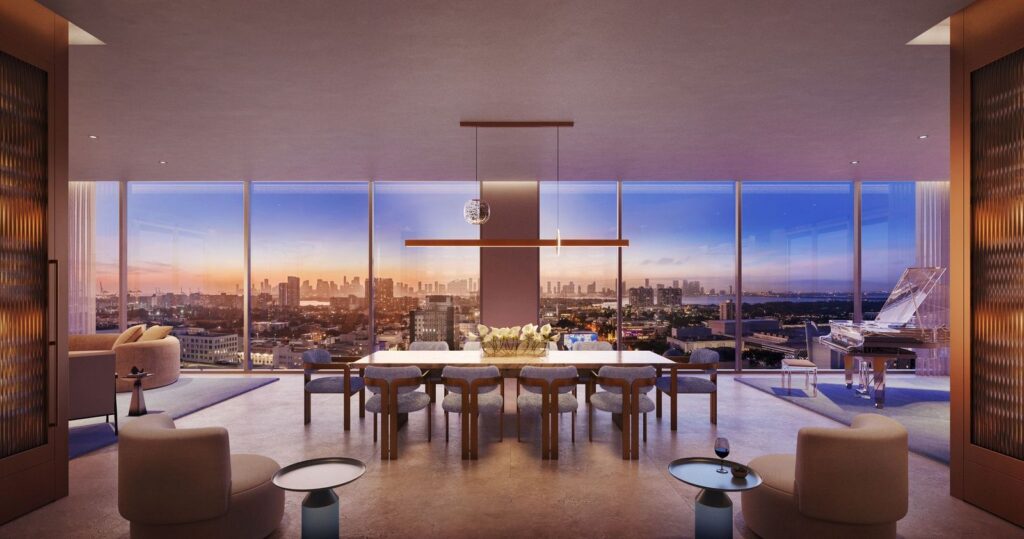
Kobi: With the Ritz-Carlton Residences, South Beach, our goal was not to simply follow the typical branded-residence formula, but to create something deeply connected to its place. We took inspiration from Miami Beach’s legacy of collaboration between historic architects like Morris Lapidus, Igor Polevitzky, and Albert Anis, designers who shaped an urban fabric that blended elegance, functionality, and a strong pedestrian experience.
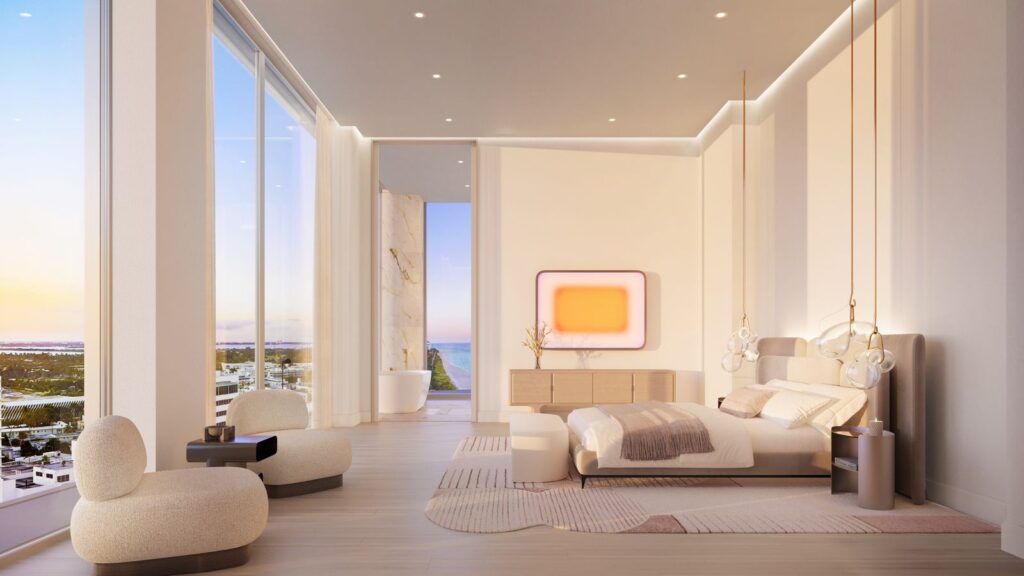
Instead of layering on more for the sake of excess, we chose to edit carefully, allowing the architecture and landscape to speak for themselves. We extended the spirit of Lincoln Road, its walkability, lush greenery, and vibrant energy, seamlessly to the ocean, creating a natural connection between the city and the beach. This restraint allowed us to focus on sculptural forms, timeless materials, and thoughtful details that honor the historic context while introducing a modern voice.
In pushing boundaries, it wasn’t about adding more; it was about refining the experience so that every element felt intentional, cohesive, and true to both the history of the site and the vision of a contemporary Miami.
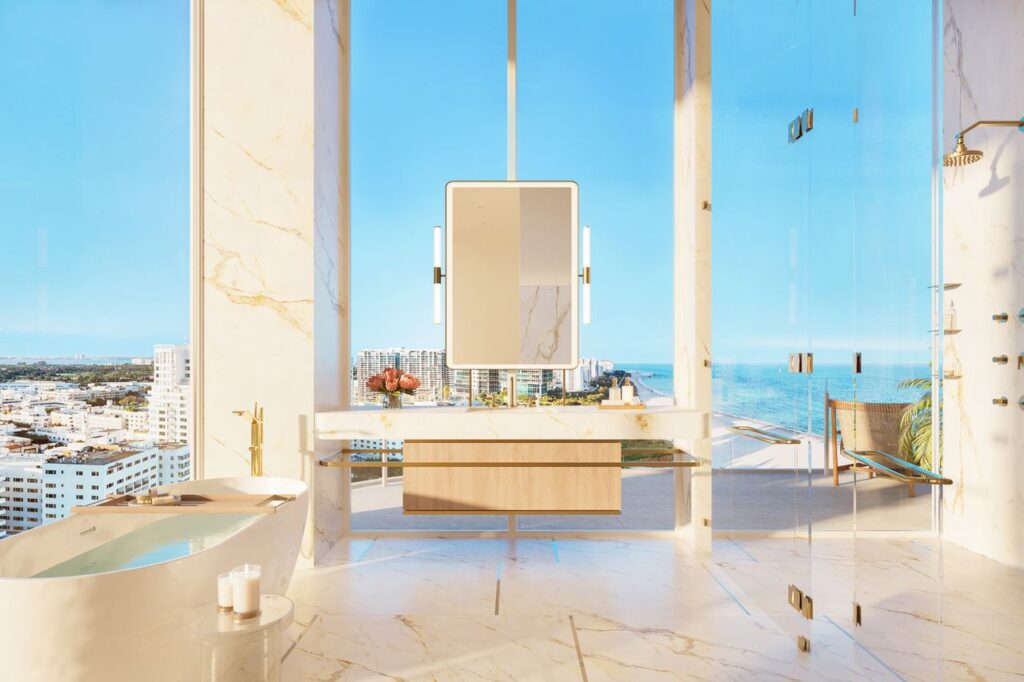
DNN: You’ve embraced restraint in a market that often equates luxury with more. What’s your philosophy on minimalism as a form of luxury?
Alessandro: Luxury, to us, is about clarity about spaces that breathe, that feel effortless yet intentional. True minimalism isn’t about scarcity; it’s about curation. It takes confidence to hold back, to create quiet moments that speak volumes. In that sense, restraint becomes the ultimate indulgence.
Kobi: I believe that, in many ways, luxury is less. As the well-known saying goes, ‘less is more, ‘ and in design, that philosophy creates space for tranquility, peace, and a deeper appreciation of nature. Here in the tropics, true luxury often comes from a sense of bare, refined elegance rather than excess. My approach is to create environments that feel monastic and serene, where architecture invites calm rather than overwhelms.
In Florida, we have the unique opportunity to design spaces that are like crystalline volumes floating in the air, much like the villas we created at The Ritz, which are elevated casitas that capture both the sunrise and the sunset while embracing the surrounding natural environment. There’s nothing more luxurious than offering someone that kind of physical, emotional, and even social tranquility. Even our sales gallery serves as a kind of manifesto for this philosophy—showing that restraint, when done with intention, can feel richer and more indulgent than excess.

DNN: The sales gallery alone is a kind of manifesto. What were you hoping to communicate there, not just about the project, but about your design values?
Alessandro: The sales gallery is far more than a marketing space; it’s a tactile introduction to the soul of the project.
It was essential for us that prospective buyers be given the opportunity to experience firsthand the level of design intention, material richness, and craftsmanship that define both the developer and design team’s vision. In a market where promises are often abstract, this space provides something tangible, something you can see, touch, and feel.
Every surface, every transition, every detail was curated to reflect the values behind the residences themselves: elegance, restraint, emotional resonance, and timeless quality. The gallery becomes a sensory preview of life at The Ritz-Carlton Residences, South Beach, and in doing so, affirms the trust that buyers place in the brand and the team delivering it.
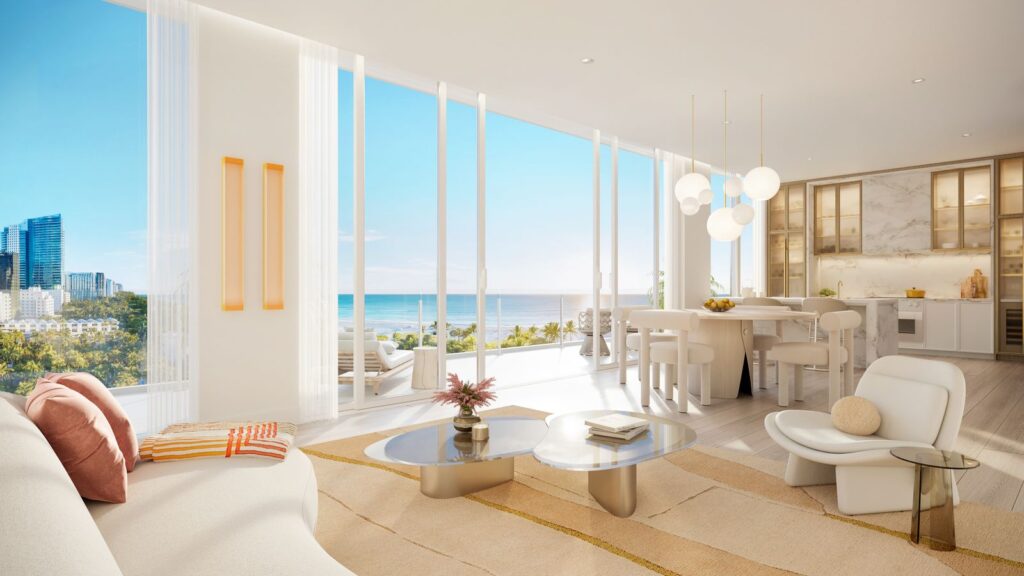
Kobi: The sales gallery serves as a prelude to the design, showcasing the architecture and interior design. It’s meant to give visitors a taste, an appetizer, of the experience that awaits. Through its scale, materiality, and atmosphere, it offers a bite-sized version of the project’s essence, allowing people to imagine where they will ultimately arrive once they’re living in the space. It’s about setting the tone, sparking anticipation, and conveying our design values before a single residence is even built.
On designing Miami
DNN: Alessandro, as someone who’s worked across continents, how does Miami challenge or excite you differently than other markets?
Alessandro: Miami is a city of dualities of nature and culture, of heritage and innovation. What excites me is its openness: to ideas, to contrasts, to reinvention, to design! It’s a place where boldness is welcomed, yet there’s an increasing appetite for authenticity and subtlety. That tension creates fertile ground for storytelling through design.
DNN: Kobi, your work has been instrumental in defining Miami’s architectural identity. How has your relationship to the city evolved, and where do you see it going?
Kobi: My relationship with Miami is, at its core, a relationship with its community and the diverse priorities of the people who live here. Some are deeply committed to environmental sustainability, others to historic preservation and restoration. There are those focused on pedestrian movement and walkability, and others who care about the dialogue between old and new architecture.
Engaging with all of these perspectives is an ongoing conversation—one that happens daily, at different levels, with different individuals. It requires time, patience, and understanding. But it’s through that dialogue that we create projects that reflect the city’s character and, ideally, earn the support of preservationists, urban planners, neighbors, and the city itself. Miami’s architectural identity isn’t shaped in isolation; it’s built through this shared exchange of ideas, rooted in both respect for the past and a vision for the future.
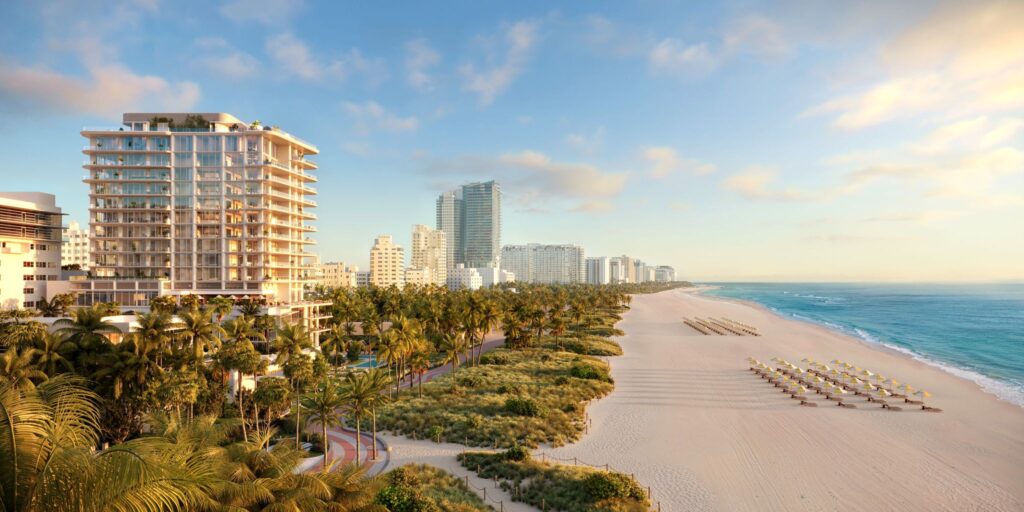
Wellness design
DNN: Wellness has become a non-negotiable in luxury design. How did wellness principles inform the architecture and interiors of this project? From materiality to spatial planning, what are some of the more subtle ways you’re integrating wellness into residential living today?
Alessandro: Wellness here isn’t an amenity, it’s a design ethos. We looked at how light enters a space, how materials feel under your hand, and how transitions flow. Natural textures, clean air systems, and intentional layouts that foster calm all these details create an environment that nurtures. It’s about designing not just for how people live, but how they feel.
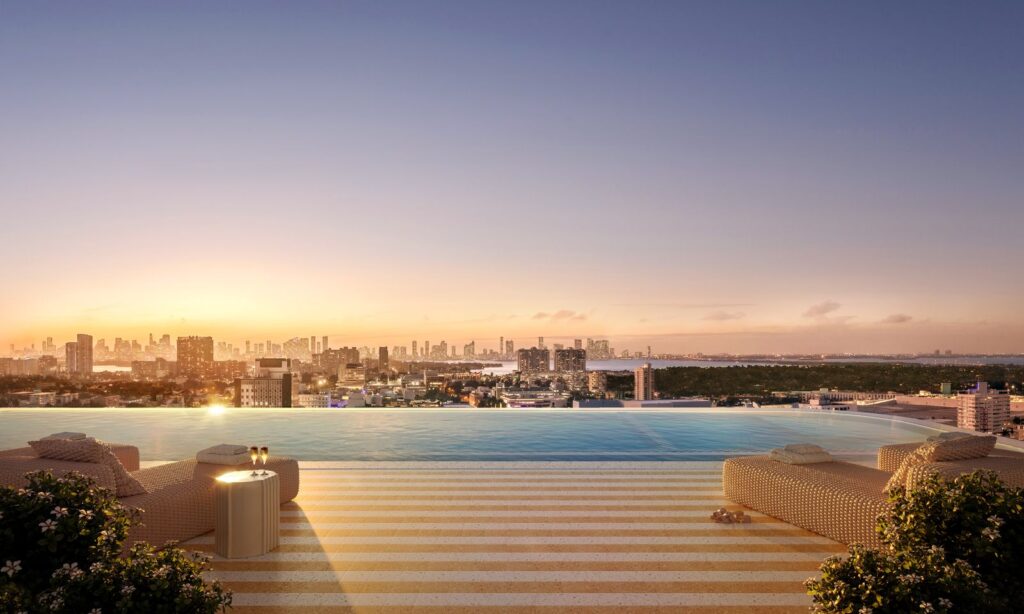
Kobi: Wellness has always been an essential part of how we live, not just a design trend. At the core, we all want to live healthier, happier, and longer, and we understand that our time is finite. That’s why our approach is to create environments that support balance; mentally, psychologically, emotionally, and physically.
In this project, wellness guided every decision, from the architecture to the interiors. We chose natural, non-toxic materials and finishes that feel tactile and calming to the touch. Floor-to-ceiling windows bring in abundant natural light, while open floor plans maximize airflow and promote a sense of spaciousness. Outdoor terraces extend living areas into the open air, encouraging a daily connection with the ocean and sky.
Subtly, we’ve integrated moments that promote well-being without being overt, quiet reading corners, shaded outdoor lounges, and pathways that naturally encourage walking and movement. These choices, combined with thoughtful spatial planning, allow residents to feel a constant connection to nature and community, which we believe is the ultimate luxury in residential living today.
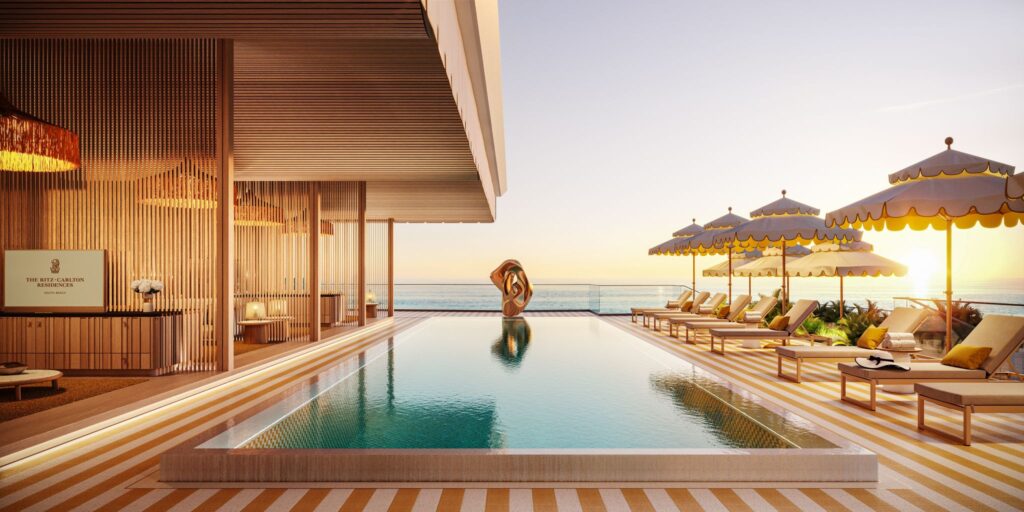
The evolution of luxury design
DNN: Luxury design is evolving. Clients are more informed, more intentional. How is that changing the way you work, and what are they asking for now that they weren’t five or ten years ago?
Alessandro: Today’s clients value meaning. They’re no longer interested in showpiece homes or untouchable furniture; they want spaces that reflect who they are. Beauty must meet functionality, and design must embody their values, not just their lifestyle. We’re creating sanctuaries that are personal, intentional, and built to endure.
What’s changed is how much more personal the process has become. Clients are asking us to listen, truly listen to their stories, their rituals, their values. They’re looking for a design that expresses that individuality with precision, empathy, and care. They want homes that evolve with them, often this is their second, third, or fourth residences, so the expectations are higher, and the tolerance for superficiality is gone.
For us, it means going deeper: infusing the brand, the architecture, and the client’s vision into one cohesive narrative. Luxury now is about emotional intelligence, creating spaces that feel as good as they look, and that endure far beyond trends.
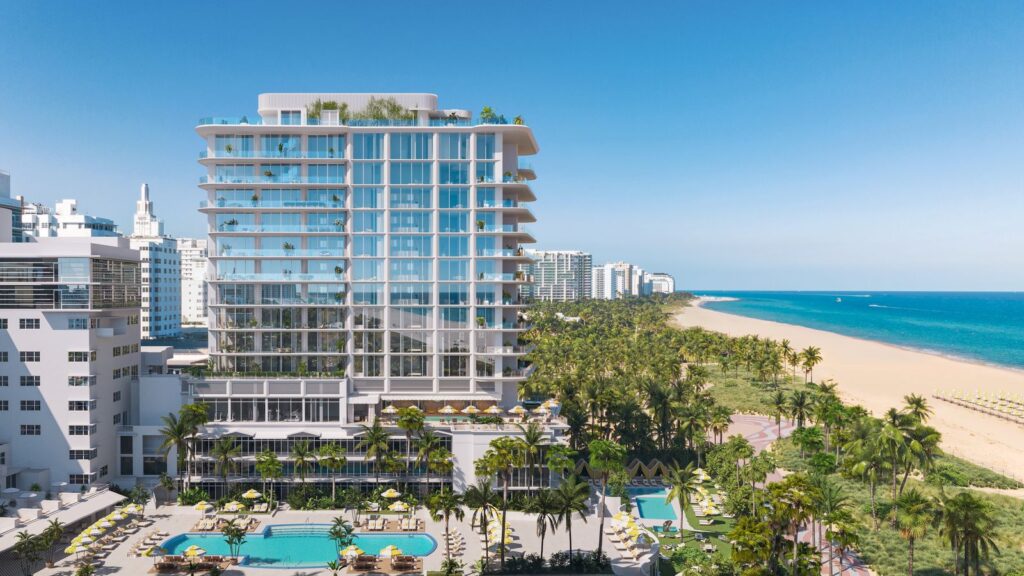
Kobi:People today are asking for simpler, luxurious elegance. They are looking for ways to make life easier and more seamless. Five or ten years ago, luxury often meant size or extravagance; now it’s about comfort, intentional design, and spaces that work intuitively for the people who live in them.
With today’s technology, we can create homes that anticipate a resident’s needs before they walk through the door: the temperature is already set, the lighting is just right, and even meals can be prepared in advance. Wellness has become just as important, with innovations like beds that can monitor and respond to your physical, emotional, and physiological state, helping to improve rest and recovery.
We now design environments that not only look beautiful but also actively support health, balance, and overall well-being, allowing residents to live with greater comfort and peace of mind. That integration of elegance, technology, and wellness has become the true definition of modern luxury.
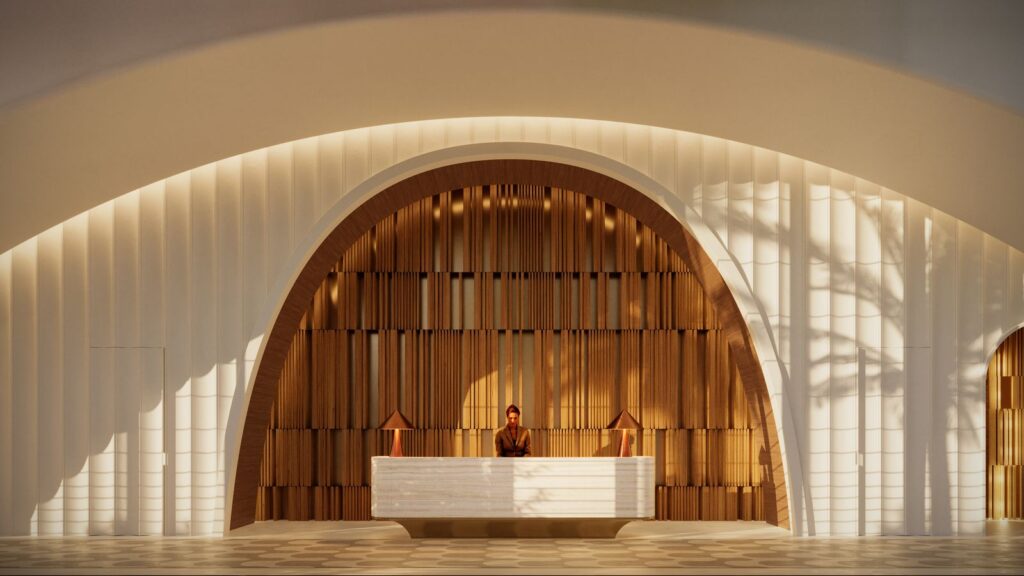
DNN: Lastly, beyond the materials and the architecture, what feeling do you want to leave people with when they step into this space?
Alessandro: A sense of calm confidence. Of refinement without excess. These residences are often not primary homes, which makes it even more important that they feel instantly comfortable, relaxed, welcoming, and deeply connected to their surroundings. That sense of place, of ease, is what defines true luxury. We want people to feel grounded, like the space understands them and quietly elevates their experience. Ultimately, it’s about emotional luxury, the kind that lingers long after you leave.
Kobi: For me, it’s critical to create that immediate ‘wow’ moment the second someone arrives, a feeling that sparks curiosity and wonder. But just as important is what happens next: space should invite them to stay, to linger, and to feel completely at ease. It’s about balancing impact with comfort so that the design leaves a lasting impression, not just in how it looks, but in how it makes people feel.

